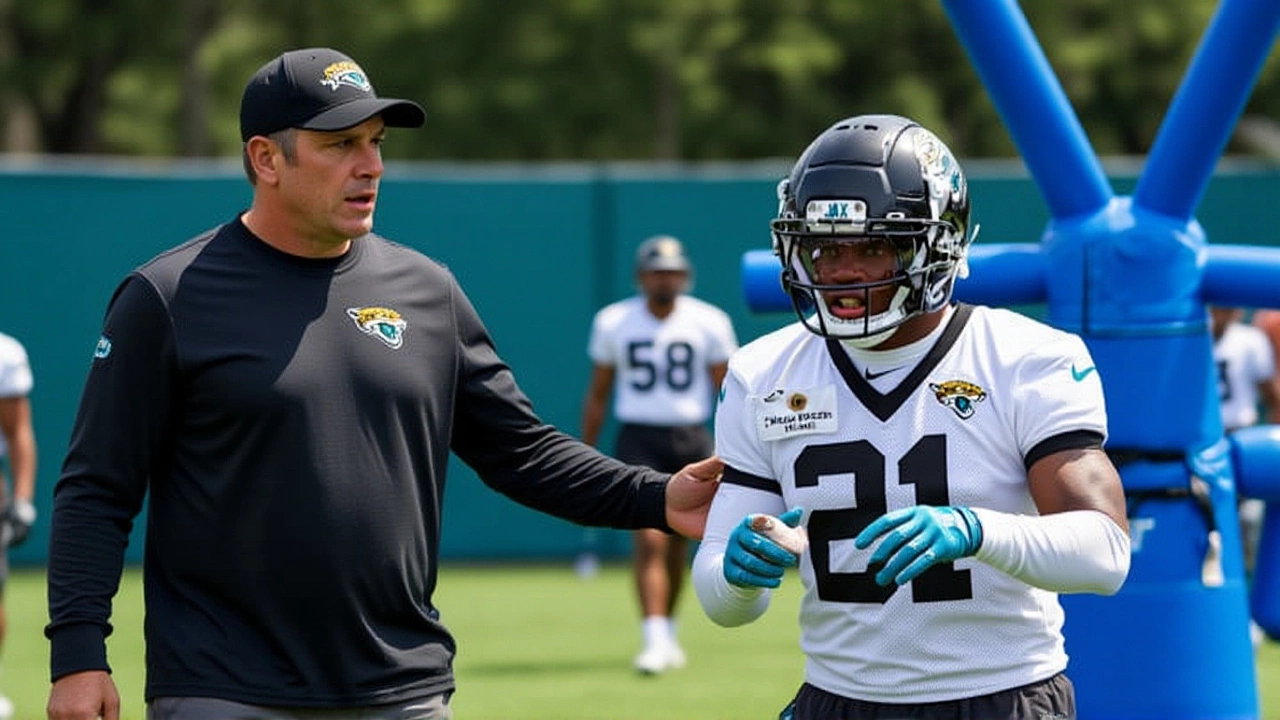Offensive Line Basics and How They Shape the Game
When talking about the offensive line, the group of five players who block for the quarterback and running backs. Also known as the offensive front, it forms the foundation of every play. The line works hand‑in‑hand with the quarterback, the player who throws or hands off the ball and the running back, the runner who carries the ball on rushing attempts. Together they create the offensive line dynamic that lets a team move the ball forward.
The offensive line isn’t a single unit; it splits into three distinct groups. The offensive tackle, the outermost linemen who protect the quarterback’s blind side handle edge rushers, while the guard, the interior players who pull on running plays create lanes for the running back. The center, the player who snaps the ball and calls line adjustments anchors the line and reads the defense. These roles combine to form a blocking wall that can either protect a pass or open a gap for a rush.
Key Positions on the Offensive Line
Each position carries specific duties. An offensive tackle must master pass protection, using footwork to mirror fast edge rushers. Guards often execute run blocking, smashing into defensive tackles to carve out space. The center’s snap accuracy and line calls set the tone for the entire unit. When these pieces click, the line enables what we call a "clean pocket" – a safe area where the quarterback can release the ball without pressure. In short, the line’s success equals better pass protection and more effective run blocking.
Blocking schemes add another layer of complexity. The most common are "zone" and "power". A zone scheme spreads the defense and assigns each lineman a specific area to block, allowing the running back to read the flow and cut. Power schemes use a pulling guard to attack a specific defensive gap, creating a predetermined hole. Both strategies require precise coordination: the line calls dictate who takes on which defender, and the quarterback must recognize the scheme to adjust his read.
Pass protection itself splits into two main concepts: "drop back" and "quick set". In a drop‑back pass, the line gives the quarterback extra time, often using a deeper set to keep rushers at bay. Quick‑set plays, such as slants or screens, rely on the line delivering a fast, firm push before the ball leaves the quarterback’s hand. The choice between the two shapes the play‑calling calendar throughout an NFL season.
Coaches also talk about "line calls" – the verbal cues the center gives before the snap. These calls relay defensive alignments, tell the line when to shift, and can even trigger audibles. A well‑executed line call can turn a potential blitz into a manageable rush, giving the quarterback the confidence to look downfield.
Physical traits matter, too. Offensive tackles often stand over 6'5" with long arms to keep edge rushers at arm's length. Guards and centers tend to be shorter but bulkier, focusing on leverage and power. Strength training, flexibility, and technique drills all feed into the line’s overall performance. When players maintain the right balance of size and agility, they can adapt to both pass protection and run blocking duties.
In the NFL, the offensive line's impact is reflected in stats like sacks allowed and rushing yards per attempt. Teams that keep their quarterback upright and consistently gain 4+ yards per carry usually rank high in these categories. That’s why scouting reports heavily weigh a line's cohesion and talent. A single breakdown can shift momentum, leading to turnovers or stalled drives.
For fans, watching an offensive line at work can be surprisingly exciting. The clash of helmets, the coordinated footwork, and the split‑second adjustments are a dance of strength and strategy. Understanding each player’s role helps decode why a play succeeded or fell apart. When a running back bursts through a gap, it’s often the guard’s pull and the tackle’s seal that made it possible.
In practice, linemen drill the "kick‑slide" technique for pass protection, the "hand fight" for engaging defenders, and the "shove‑and‑pull" for power runs. These repetitive motions build muscle memory, allowing the line to react instinctively during games. Coaches track these drills with video analysis, fine‑tuning foot placement and hand placement for maximum effectiveness.
Overall, the offensive line is the engine that powers an offense. Whether it's protecting the quarterback’s blind side, opening a hole for a 20‑yard rush, or executing a screen that flips the defense, the line’s contribution is pivotal. Mastery of blocking schemes, line calls, and positional techniques defines a successful NFL unit.
Below you’ll find a curated selection of stories and analyses that dig deeper into offensive line strategies, player profiles, and game‑changing moments. From breakdowns of elite tackles to the evolution of zone blocking, the collection offers practical insights you can use to appreciate or improve any offensive line you watch.

Jaguars' Three Assistant Coaches Carry 2025 Hopes Under New Head Coach
The Jacksonville Jaguars' new coaching staff, led by head coach Liam Coen, leans on three key assistants—Spencer Whittle, Shaun Sarrett and Anthony Campanile—to revive the franchise in 2025.
Read More